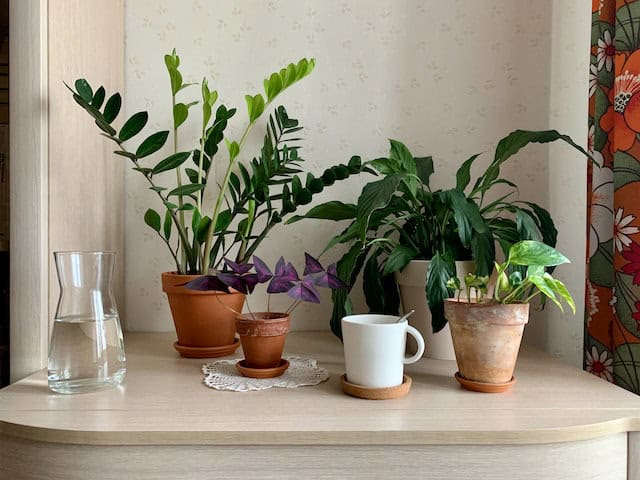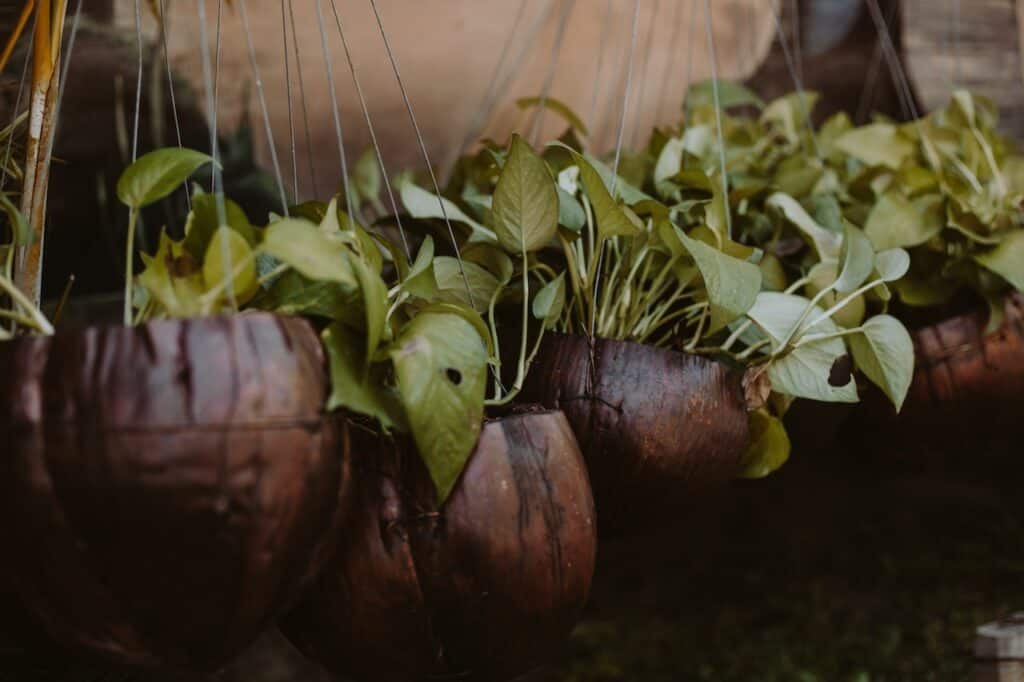Pothos plants can be cared for with minimal attention; however, they require bright indirect lighting and can thrive even in dry air environments. Furthermore, food must also be provided regularly to them in order for them to flourish properly.
If your pothos plant suddenly begins drooping, it could be because its nutrients have run dry. A quick solution would be adding some liquid fertilizer into its water source.
1. It’s Easy to Care For
Pothos plants make ideal office and dorm room plants, thanks to their versatility in growing conditions. From bright to low light environments and dry to wet conditions, Pothos thrive in both soil-rich soil as well as water vases; most commonly without pest issues; however occasionally spider mites, scale or mealybug infestation may occur – cotton swabs dipped in alcohol can help eliminate these bugs quickly.
Seeing a pothos plant’s leaves droop or wilt indicates stress and the need for water, while any foul-smelling roots indicate root rot. If this is the case for your pothos plant, try repotting into fresh soil with increased moisture; this should restore its health and help return its vibrant state back. Beware, though; pothos is toxic to cats and dogs should it come into contact with their digestive systems.
2. It’s Cheap
Trailing plants have long been utilized in Feng Shui to balance a room’s energy balance, and are particularly effective at flourishing in dim corners of homes. Their lush foliage has even been shown to remove Volatile Organic Compounds (VOCs) from the air – making this plant an invaluable addition to any household!
Pothos doesn’t require special soil conditions, but it will appreciate being fed once every month with all-purpose houseplant food such as Miracle-Gro Indoor Plant Food.
If the leaves on your pothos begin to droop, this is a sure sign it needs water. Avoid overwatering which could cause root rot; use a moisture meter to ensure only what your plant requires; excessively frequent watering may also harm it.
3. It’s Versatile
Pothos plants (Epipremnum aureum) feature long, trailing vines, making them popular choices for hanging baskets, trellis designs, living walls, or office spaces due to their tolerance of low light conditions.
Pothos plants can easily be propagated using stem cuttings. Simply take a healthy 6-to 12-inch long piece of stem, place it in water until its end has callused over, plant it in soil and watch as your baby Pothos thrives!
Check your plant regularly for issues like yellow leaves or brown spots that could signal sunburn, under-watering, root rot or insect infestation. These issues are easy to address using insecticidal soap or neem oil applications – plus plants serve as an effective air purifier by filtering harmful VOCs like toluene, xylene, carbon monoxide and formaldehyde from the air according to a NASA study!
4. It’s Easy to Grow
Pothos plants, as seen here, are among the easiest houseplants to care for. Once their roots have taken hold in water, simply transfer them to soil in a container and keep in bright indirect lighting conditions. House plant enthusiasts may prefer rooting their pothos directly in potting soil instead of using jars of water, believing this provides more nutrients to the plant.
Keep in mind that moving your plant from water to soil may cause it to wilt and shed leaves, so keep an eye out. Shriveling or curling of leaves are signs that more water needs to be provided for.
To avoid overwatering your pothos plant, allow its soil to dry out between watering sessions. Too much moisture may lead to root rot, while too little will result in its leaves shrinking and falling off.
5. It’s Easy to Propagate

Pothos is one of the easiest plants to propagate, making it an excellent choice for newcomers and experienced gardeners alike. Simply cut off a healthy green piece of stem 6-12 inches long that contains at least one node (the little brown bumps on its stem), place it in water, and watch as roots form!
Duford suggests propagation in spring and summer when parent plants are blooming vigorously and have more energy to dedicate to root development. He advises dipping cuttings in rooting hormone to encourage roots to form, while using transparent glass containers so you can monitor progress easily. Propagating can make use of trimmings you would normally discard into compost bins while helping your houseplants look tidier!
6. It’s Easy to Clean
Pothos plants are resilient plants, adaptable to all sorts of environments including low light environments. Their preferred lighting conditions range from moderately bright indirect sunlight up to full direct sun exposure.
As they don’t require much water or fertilizer, making them an excellent option for beginners. They will even survive even if their leaves become dusty – although this may reduce photosynthetic activity and decrease photosynthesis activity.
For optimal pothos leaf hygiene, the easiest and most reliable method is to wipe them gently with non-abrasive sponge or microfiber cloth. Additionally, you can create a solution of mild dish soap and lukewarm water and dip each sponge or cloth in this solution prior to wiping each leaf.
Overwatering pothos plants is one of the primary causes of root rot and other diseases. An excess of moisture causes the soil to become saturated with moisture, making absorption impossible by the roots. Watch out for signs such as yellowed foliage or excessively moist soil as these could be precursors.
7. It’s Easy to Grow Indoors
Pothos plants make great indoor plants due to their fast growth rate and ease of propagation. Simply cut a stem just below a leaf node and submerge in water until roots appear; give it time – results may take several months! Patience is key!
Plants bring life and color to any space. Multiple studies have proven their power to increase productivity by helping enhance focus and memory retention.
Houseplant soil quality is key when it comes to their success, so don’t use garden soil which may lead to salt buildup and stunt growth over time; use a premixed houseplant mix with nutrient-rich ingredients such as vermiculite or sphagnum peat moss instead. Furthermore, be mindful when placing near air conditioners or radiators due to sudden temperature changes which will stress out plants; avoid overwatering which can lead to root rot; use only enough water as necessary – any more will stress your plant out further.
8. It’s Easy to Clean Outdoors
Pothos plants are resilient plants, often withstanding periods of neglect for brief periods. Not bothered by rain either, pothos can even be propagated via stem cuttings with just a sharp pair of scissors!
Plants thrive in various climates, though sudden shifts in temperature and humidity from open windows or radiators can create fungal issues. Since plants don’t like dry soil, watering regularly with the aid of a moisture meter is recommended to ensure healthy soil. They don’t need much in terms of nutrition either – just some sunshine in their lives will do. Check their leaves regularly for pests; old leaves often turn yellow as part of a plant’s lifecycle!




